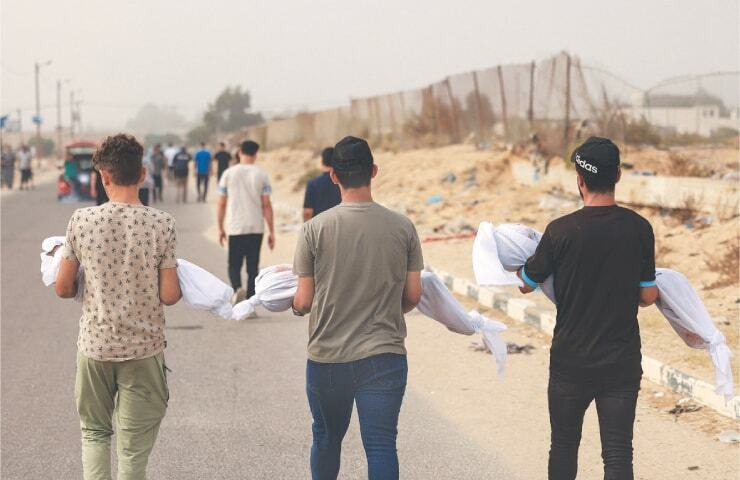As the conflict in the Gaza Strip rages on, a grim milestone has been reached. Gaza’s health ministry reported that at least 436 people lost their lives in a relentless wave of bombardments over the past 24 hours, pushing the overall death toll to over 5,000. This horrifying development underscores the devastating impact of the ongoing violence in the region.
Accusations of a “Licence to Kill”
In a strongly worded condemnation, Palestinian Prime Minister Mohammed Shtayyeh accused Western nations of giving Israel a “licence to kill.” He expressed deep concern over Israeli leaders’ statements regarding preparations for a potential land invasion, which he believes would lead to further atrocities, forced displacement, and devastation in Gaza. Shtayyeh’s remarks shed light on the international community’s role in addressing the crisis and the urgent need for a ceasefire.
Humanitarian Gesture Amidst Tragedy
Amidst the chaos and destruction, there is a glimmer of humanity. Hamas, the Palestinian group in control of Gaza, announced the release of two elderly women prisoners. This move was in response to mediation efforts led by Egypt and Qatar. The decision to release these prisoners was rooted in humanitarian considerations and concerns about their deteriorating health. It follows the earlier release of an American mother and daughter, Judith and Natalie Raanan, on Friday. These acts of clemency highlight the importance of international mediation and efforts to ease the suffering of individuals caught in the crossfire.
Struggles to Communicate with the World
In the midst of the turmoil, many Palestinians in Gaza are struggling to maintain contact with the outside world. With the severe electricity cuts that have been part of the “total siege” initiated by Israel on October 9, communication has been seriously hampered. Gazans are resorting to posting messages on social media to reach out to loved ones, conveying their solemnity and despair. The inability to access reliable internet connections, landlines, or even electricity to power them has left residents isolated and grappling with uncertainty. Air strikes have further exacerbated the situation by damaging communication infrastructure, leaving the remaining connections overwhelmed and unreliable.
These dire circumstances emphasize the urgency of addressing the humanitarian crisis in Gaza. The ongoing violence has not only resulted in a staggering death toll but has also isolated the population from the world. It is a stark reminder that amidst the geopolitical complexities of the conflict, innocent civilians continue to bear the brunt of the turmoil.
Efforts to mediate and broker a ceasefire persist, with international actors seeking to bring an end to the suffering in Gaza. As the conflict continues, the world watches closely, hoping for a resolution that can put an end to the bloodshed and allow the people of Gaza to rebuild their lives.
In conclusion, the situation in Gaza remains dire, with an ever-increasing death toll and mounting challenges in communication. The accusations of a “licence to kill” highlight the need for international intervention and a swift resolution to the conflict. Amidst the tragedy, acts of humanity, like the release of prisoners, offer a glimmer of hope. The world’s attention remains fixed on Gaza, with a collective desire for peace and stability in a region plagued by turmoil.















